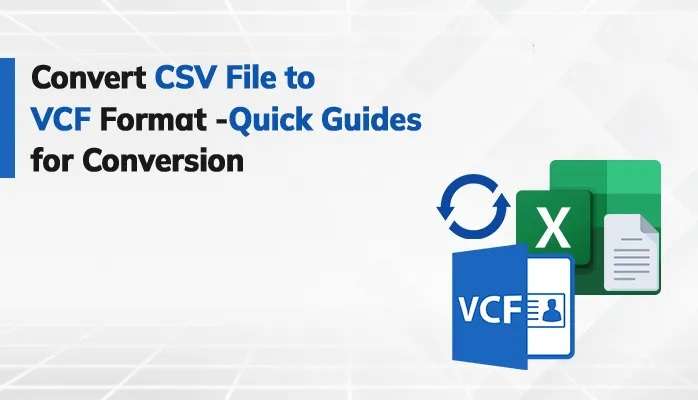Introduction
Moving from CSV (Comma Separated Values) to VCF (Virtual Contact File) is a common requirement in the field of digital fact management. This shift makes it much less difficult to transform unstructured facts right into an extra transportable and based layout that is especially meant for contact data. A seamless data control approach relies on your functionality to understand this migration, its reasons, and powerful answers.
Regarding report layout (migration from CSV to VCF),
Tabular data separated with the useful resource of the use of commas is saved within the famous report layout CSV. Although it’s far bendier, it’d no longer have unique contact information or structural data. However, VCF is a standardized format that mainly makes a specialty of touch records, permitting the installation and storage of names, phone numbers, emails, and other records.
Reasons
The boundaries of CSV in terms of storing and organizing touch records regularly motivate the need for CSV to VCF migration. VCF is great for touch management because it allows for easy integration across more than one platform and gadget and offers a set-up garage, providing a more complete technique.
The Solution: Manuals and Their Consequences
The manual approach to migrating information from CSV to VCF involves first converting CSV documents into a layout that is well matched with the software that would create VCF files. Although this method works nicely for small datasets, it becomes tedious and prone to mistakes when handling huge volumes of data. In addition to taking a long time, it may cause information loss or inconsistencies at the same time as changing.
Application for Automated Migration from CSV to VCF
DataVare CSV to VCF migration Software provides dependable and powerful strategies to overcome the drawbacks of guide migration. With its capability to cope with large datasets pretty surely, this software ensures accuracy and speed to a certain degree in the migration approach.
Features
The CSV to VCF Migration Application has numerous talents that decorate and expedite the migration device:
- Interface that’s Easy to Use: Thanks to its intuitive layout, it is straightforward to navigate and use.
- Bulk Conversion: capable of managing massive volumes of CSV records effectively.
Options for Customization: Allows customers to regulate the conversion to healthful their very private dreams. - Compatibility: Supports numerous CSV codecs and ensures a persevering conversion to VCF.
- Error Handling: It detects and corrects formatting mistakes or statistical inconsistencies during migration.
Steps
- Installing the CSV to VCF Migration Application calls for downloading and installing it.
- Enter the CSV record or documents that want to be moved.
- Configuration: Adjust the parameters as favored (non-compulsory).
- Conversion: Get the migration gadget started.
- Validation: Check the accuracy of the generated VCF files.
- Export: Put the transformed VCF documents inside the folder of your preference.
Related Post:- How do I convert multiple contacts from CSV to VCF?
Conclusion
The conversion of CSV to VCF, which gives installation portable records properly applicable to hundreds of structures and gadgets, is a crucial first step toward inexperienced touch control. While manual techniques exist, they are not as effective with large datasets. The dependable and green answer offered by means of using the Automated DataVare CSV to VCF Migration Application expedites the manner while at the same time ensuring the accuracy and integrity of the transformed facts. These devices allow for effort and time savings, superior contact record management, and a reduced threat of information loss or inconsistencies.

As the editor of the blog, She curate insightful content that sparks curiosity and fosters learning. With a passion for storytelling and a keen eye for detail, she strive to bring diverse perspectives and engaging narratives to readers, ensuring every piece informs, inspires, and enriches.










